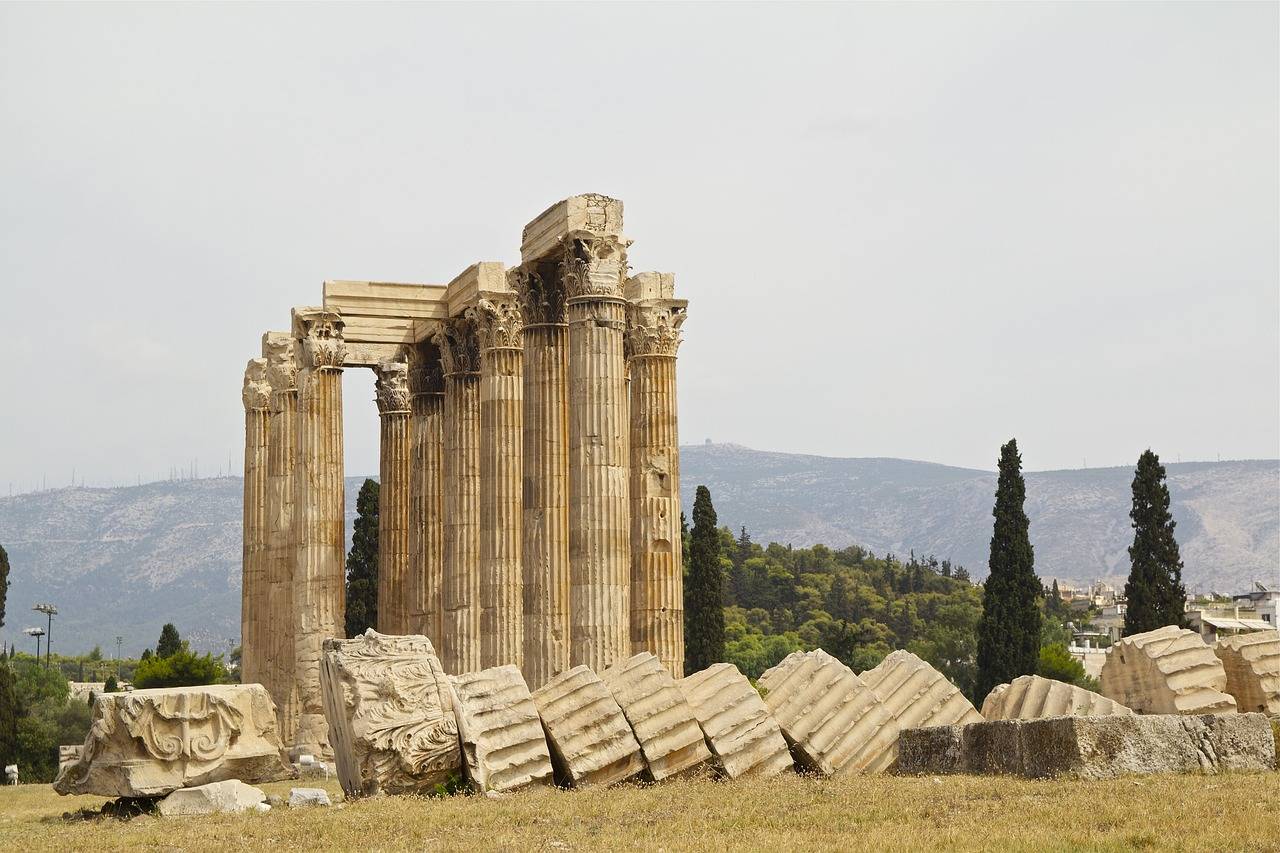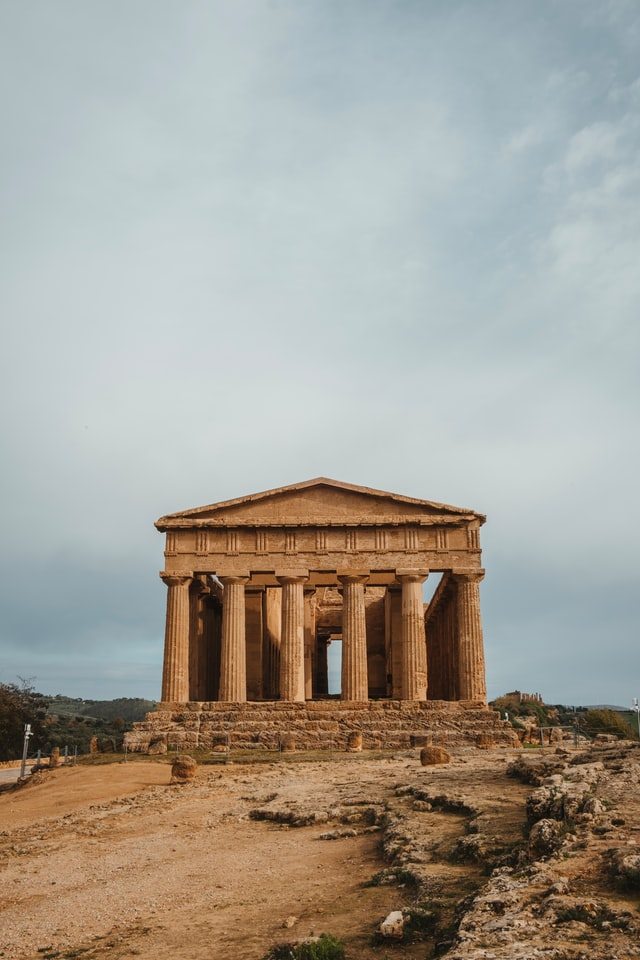Acropolis
Share this attraction
Back

Acropolis
Athens
Acropolis - the most important information
The Acropolis of Athens is an ancient citadel located on a rocky outcrop above the city of Athens and contains the remains of several ancient buildings of great architectural and historical significance, the most famous being the Parthenon. The word Acropolis is from the Greek words ἄκρον (Akron, "highest point, extremity") and πόλις (polis, "city"). The term acropolis is generic and there are many other acropoleis in Greece. During ancient times it was known also more properly as Cecropia, after the legendary serpent-man, Cecrops, the supposed first Athenian king.
History of the Acropolis
While the earliest artifacts date to the Middle Neolithic era, there have been documented habitations in Attica from the Early Neolithic period (6th millennium BC). Not much is known about the architectural appearance of the Acropolis until the Archaic era. During the 7th and the 6th centuries BC, the site was controlled by Kylon during the failed Kylonian revolt. While there is evidence that the hill was inhabited as far back as the fourth millennium BC, it was Pericles (c. 495–429 BC) in the fifth century BC who coordinated the construction of the buildings whose present remains are the site's most important ones, including the Parthenon, the Propylaea, the Erechtheion and the Temple of Athena Nike. The Parthenon and the other buildings were seriously damaged during the 1687 siege by the Venetians during the Morean War. During the Byzantine period, the Parthenon was used as a church, dedicated to the Virgin Mary. During the Latin Duchy of Athens, the Acropolis functioned as the city's administrative center, with the Parthenon as its cathedral. After independence, most features that dated from the Byzantine, Frankish, and Ottoman periods were cleared from the site in an attempt to restore the monument to its original form.
What can you see in the Acropolis?
Acropolis is a symbol of Greece and the Ancient periods. It is the heart of history and modern civilizations. Here you can admire the beauty of time and different architectural periods. Everyone heard of this place and here you can connect with everything that you heard of Greece. The spirit of this place is magnificent and here are just some of the sights that we are suggesting you pay your attention to:
Acropolis is a symbol of Greece and the Ancient periods. It is the heart of history and modern civilizations. Here you can admire the beauty of time and different architectural periods. Everyone heard of this place and here you can connect with everything that you heard of Greece. The spirit of this place is magnificent and here are just some of the sights that we are suggesting you pay your attention to:
- Parthenon: The Parthenon was built as a temple, dedicated to the goddess Athena, the patron of Athens. When the Greek Empire was at the peak of its political stature in 447 B.C.E., the temple’s construction began. It took nine years for the main structure to be completed.
- Erechtheum: The Erechtheum, also known as the Erechtheion, is located on the north side of the Acropolis of Athens. The temple was dedicated to both Athena and Poseidon. Muscles are thought to be the architect of this magnificent structure that was constructed between 421 and 406 B.C.E.
- Temple of Athena Nike: This temple, located next to the Propylaea, was dedicated to Greek goddesses Athena and Nike. Since it was built during 420 B.C.E., it currently stands as the first fully Ionic temple built at the Acropolis of Athens. The temple stood until 1686 when it was demolished by the Turks. The temple was reconstructed after the independence of Greece in 1834.
- Odeon of Herodes Atticus: On the southwest slope of the Acropolis lies the majestic Odeon of Herodes Atticus. This Theater was built in 161 C.E. by Herodes Atticus in memory of his wife, Aspasia Annia Regilla. During its 106 years of existence, the theater could accommodate crowds of up to 5000 people. Today, it is still used for cultural events in Athens.
What should you know before visiting the Acropolis?
- Acropolis Hill is a large site with a lot of interesting things to discover. Visitors can expect to spend between 2 to 3 hours at the Acropolis.
- Summer in Athens (mid-June to mid-September) is the high season. If you visit Athens during this time you will be able to catch some sun and enjoy the nightlife. However, traveling during peak season means that the city will be packed with tourists, which will lead to higher accommodation and airfare rates. If you are hoping for pleasant weather and quiet streets, visit during April to mid-June or mid-September through October. If you are on a tight budget, visit between November to March, when Athens is experiencing autumn and winter.
- There are two entrances to the Acropolis. The main entrance is located at the western end of the Acropolis. This is where the ticket office is located. This entrance tends to be busy; you may have to wait for one to two hours during the peak season to be able to enter. A smaller ticket office is located at the southeastern corner of the Acropolis, on Dionysiou Areopagitou near the Acropolis Museum. If you are hoping to avoid the long lines, use this entrance to the Acropolis.
- There is an elevator, located about 350 meters from the main entrance, available for people in wheelchairs and those with diminished abilities. Users of the elevator should contact in advance.
- People with disabilities can use the Acropolis golf carts.
Opening hours and tickets for the Acropolis
- Opening hours: The Athens Acropolis timings change during the summer and winter seasons. in the Summer: 8 AM to 6 PM (last entrance to at 5.30 PM), and in the Winter: 8 AM to 5 PM. The Athens Acropolis remains closed on 1 January, 25 March, 1 May, Easter Sunday, 25 and 26 December.
- Tickets: There are several tours on which you can visit the Acropolis. Prices start at 15 USD and go all up to 60 USD depending on the tour and your preferences. On that note, we are suggesting you visit the official website of the Acropolis so you can book your tickets before going.
How to get to the Acropolis?
Acropolis is located at the center of Athens, so it is very easy to find it. It is also very well connected with public transport so you can go there in several ways. Here are just some of them:
Acropolis is located at the center of Athens, so it is very easy to find it. It is also very well connected with public transport so you can go there in several ways. Here are just some of them:
- By Metro: Take the red line, #M2. The closest subway station is Acropoli; a 10-minute walk will get you to the Acropolis. You can also take the blue line #M3, to Monastiraki, a 12-minute walk away.
- By Bus: Take bus 230 to Akropolē. From here, the Acropolis of Athens is an 8-minute walk. You can also take bus numbers 035 (Monastiraki stop, 14 mins away) or 106 (Makryianni, 10 mins away).
Fun facts about the Acropolis:
- Acropolis can be taken to mean “High City”, “City on the Extremity”, or “City on the Air”. Greece has many other acropoleis, but the term most often refers to the Acropolis of Athens
- The Panathenaic Games was Athens’s answer to the Olympic Games. It involved a wide range of activities including chariot races, mock cavalry battles, and poetry and music competitions. During this event, the Athenians would hold a procession to the Acropolis, where they would place a new robe on the statue of Athena Parthenos.
- The Acropolis had suffered extensive damage during the Morean War. The Parthenon was used to store gunpowder during this time, and it was hit by a cannonball when the Venetians lay siege to the area in 1687.
- Construction of the Propylaea began in 437 BC, but it was cut off in 432 BC even though the structure was still not finished.
- Construction of the Erechtheion began in 421 BC and was completed 15 years after, using marble from Mount Pentelikon and black limestone from Eleusis. It was dedicated both to Athena and Poseidon.
- Christians converted the temples of Acropolis into churches in the 6th century, with the Parthenon becoming a church that was dedicated to the Virgin Mary. It then became known as the Church of the Parthenos Maria. When the Ottomans conquered the city in the 1460s, the Parthenon was transformed into a mosque.
- Thomas Bruce, 7th Earl of Elgin, removed several sculptures (now known as the Elgin Marbles) from the Parthenon from 1800 to 1803. The sculptures were later sold to the British Museum in London. The Greek government has been trying to have the sculptures returned to Greece
Location
Learn more about this destination
Discover the beauty of the destination through blogs that highlight the most famous landmarks, hidden gems, and provide travel tips for visiting this destination. Embark on an adventure through the stories of experienced travelers.





















